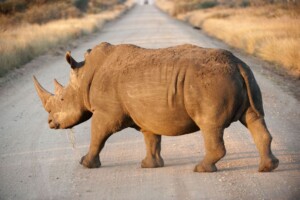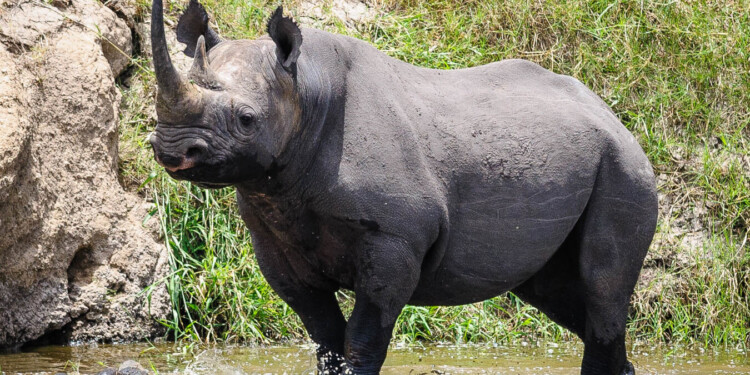The World Bank has issued the world’s first Wildlife Conservation Bond (WCB) or the “rhino bond”, raising $150 million to help efforts to increase the endangered black rhino population in South Africa, the bank said in a statement on Thursday.
The “Rhino Bond” includes a potential performance payment from the Global Environment Facility (GEF), which will contribute to protecting and increasing black rhino populations in two protected areas in South Africa, the Addo Elephant National Park (AENP) and the Great Fish River Nature Reserve (GFRNR).
The WCB is a first-of-its-kind, outcome-based, financial instrument that channels investments to achieve conservation outcomes – measured in this case by an increase in black rhino populations.
Rhinos play a crucial role in shaping entire ecosystems on which countless other species depend. Through the WCB, investors support the financing of activities to protect and grow a critically endangered species with clear conservation targets, contributing directly to biodiversity, and bringing jobs to local communities through the creation of conservation-related employment in a rural and underserved region of South Africa, the bank said in their statement.
“The Rhino Bond is a groundbreaking approach to enabling private sector investment in global public goods — in this case biodiversity conservation, a key global development challenge,” said World Bank Group President David Malpass. “The pay-for-success financial structure protects an endangered species and strengthens South Africa’s conservation efforts by leveraging the World Bank’s infrastructure and track record in capital markets. Importantly, it can be replicated and scaled to channel more private capital for other conservation and climate actions and development objectives around the world.”

There are five rhino species globally, with most of the animals in South Africa. Black rhino numbers have dropped to around 2,600 from 65,000 in 1970, and may once have been as high as 850,000, according to the World Bank.
Buyers of the Rhino Bond will receive a payment from the Global Environment Facility based on preset targets for population growth. To receive the maximum payment the rhino population will need to increase by more than 4% per annum.
“The WCB model provides a new blueprint for the way conservation is financed and has the potential to be a key enabling tool for the delivery of the post-2020 Global Biodiversity Framework,” said Oliver Withers, Biodiversity Lead within Global Sustainability at Credit Suisse.
There is growing awareness about the need to protect wildlife for the health of the planet, however most investment in nature today comes from national and sub-national governments and, to a lesser extent, from development banks, international NGOs, private foundations, and international agencies.
The Wildlife Conservation Bond is a game-changing innovation resulting in direct funding to nature reserves and protected areas. This initiative could be replicated to protect additional rhino populations, as well as other species whose threatened status is consequential for all of us.
Editor’s Note: The opinions expressed here by Impakter.com columnists are their own, not those of Impakter.com. In the Featured Photo: Black Rhino in northern Serengeti, Tanzania. Featured Photo Credit: Flickr.com










